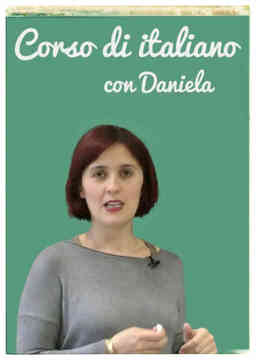









Difficulty:
 Beginner
Beginner
Italy
One tricky thing in lots of languages is when words sound the same but are written differently and have different meanings. In English, these are called, "homophones," part of the larger group, "homonyms."
Difficulty:
 Beginner
Beginner
Italy
Two words can sound the same because in one, there is an article beginning with L connected to the noun by way of an apostrophe (such as l'ago [the needle]) and in the other one, the first letter is L, such as lago [lake]. When we hear them, we distinguish them from the context, because otherwise, there is no way to know.
Difficulty:
 Beginner
Beginner
Italy
Omonimi (homonyms) look and sound the same but have different meanings, sometimes wildly different meanings!
Difficulty:
 Beginner
Beginner
Italy
As promised, Marika talks about the verb tenere (to keep, to hold), beginning with its conjugation. Let's keep in mind that Italian tenses don't always correspond to the English ones. For example, the passato prossimo is conjugated like the English present perfect tense, but is used differently in expressing events in time. The imperfetto is translated various ways in English. See this lesson about the imperfetto.
Difficulty:
 Beginner
Beginner
Italy
We learn in this segment that the verb tenere can mean not only "to hold," but also "to keep" or "to have."
Difficulty:
 Beginner
Beginner
Italy
Here's the last segment about the verb tenere where Marika provides several expressions using the verb. In some cases, we can use "to keep" and "to hold" when translating, but not always.
Difficulty:
 Beginner
Beginner
Italy
We take a deep dive into the common and very useful verb vedere (to see). First of all, we look at how it is conjugated. Then we go on to its meaning, as well as some expressions.
Difficulty:
 Beginner
Beginner
Italy
Are you ready for plenty of expressions using the verb vedere (to see)? Andiamo a vedere (let's go see)!
Difficulty:
 Intermediate
Intermediate
Italy
Here are some more expressions featuring the verb vedere (to see). For non-native speakers, a few of them might be a little tricky to understand, but others might be very useful to learn and use.
Difficulty:
 Beginner
Beginner
Italy
You will find out in this video that there are really a lot of expressions using la lingua (the tongue). The tongue can be lunga (long), sciolta (loose), biforcuta (forked) and more. We use the tongue when we speak, so lots of these expressions involve speaking.
Difficulty:
 Beginner
Beginner
Italy
Marika describes some situations, asks a related question, and provides us with various ways to answer in the affirmative. 18 ways to say sì (yes).
Difficulty:
 Beginner
Beginner
Italy
Just as there are many ways of saying "Yes" without saying sì, there are plenty of ways of saying "No" without saying no. Check them all out!
Difficulty:
 Beginner
Beginner
Italy
There are a great many expressions with la testa (the head) as the protagonist. Marika, gives us a first round of explanations and examples, many of them from Yabla videos.
Difficulty:
 Beginner
Beginner
Italy
Marika's explanations together with examples from video clips make it easy and fun to learn new expressions using la testa (the head).
Difficulty:
 Beginner
Beginner
Italy
There are various ways to talk about being obsessed, distracted, or crazy... Marika has some great examples from our favorite TV series.
Are you sure you want to delete this comment? You will not be able to recover it.